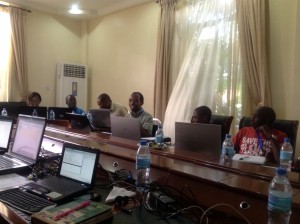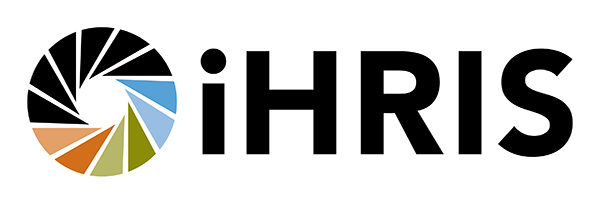iHRIS Academy 2013: Feedback from a Participant
Training expectations
 The iHRIS Academy 2013 was meant for iHRIS implementers and system administrators who are implementing an iHRIS instance. The idea of meeting with the actual iHRIS development experts, as well as connecting with other Google Group users and iHRIS implementers and users from different countries, was very attractive.
The iHRIS Academy 2013 was meant for iHRIS implementers and system administrators who are implementing an iHRIS instance. The idea of meeting with the actual iHRIS development experts, as well as connecting with other Google Group users and iHRIS implementers and users from different countries, was very attractive.
As an implementer, my expectations varied from learning the development tools, management, and usage of iHRIS, best practices, and project management. I particularly wanted to learn more about the following:
- Bazaar and Launchpad for collaborative development.
- Field and Form customizations for extending the functionality of the system based on different use cases or user requirements.
- Report development, design, filters, and publication layouts and presentation possibilities. I believe that there are ingenious ways of presenting data in reports to enhance the user experience.
- Data imports from various file types, which I believe can significantly reduce the time for data capture (where possible electronically), while at the same time reduce data errors and improve the quality of the data.
- Visit several sites where iHRIS has been implemented.
- Data usage post-implementation.
Value of the content
The content of the training I found to be appropriate, although highly technical, considering the different competency levels of the participants. I came to realize that mastering Linux commands is essential in managing the development environment for iHRIS. The skill of the instructors with Linux shell commands is commendable. With time, and increased use of the Linux tools, I believe our IntraHealth Namibia developers will elevate their skill set with greater efficiency.
Forms customization is one of the most important goals of iHRIS implementation. I felt that not enough time was allocated to the session, and participants struggled (to some extent) in grasping the concept. However, for Namibia, this session was greatly appreciated, as it brings to light how we can go about our implementation of iHRIS at the Anglican Medical Services (AMS). I have also observed the requirement to develop in-house capacity for PHP and XML.
The Bazaar and Launchpad session was very useful in demonstrating collaboration efforts and management of a multi-person development team. We learned how to create branches and how each team member can contribute to the development efforts, thus reducing the total development time during implementation. Similarly, the data-importing feature required a more intimate interaction with the PHP and XML code. This is highly technical, and novice users may have challenges in achieving full control of their data-entry automation.
Our visit to the Christian Social Services Commission (CSSC), specifically, was very fruitful in learning about and sharing their iHRIS experience. Mr. Petro Pamba, the THRP Coordinator, gave a detailed account of how their challenges were solved with the iHRIS implementation. He made a well-articulated summary of how they went about the project, starting with the engagement of stakeholders, definitions of requirements, training of users, the change process, and most importantly, the usage of data from the system. Their story is incredibly enlightening and encouraging. They are a very good and strong reference point for iHRIS. I will continue to talk about them.
Criticisms
The objectives of the event were to expose the capabilities of iHRIS, albeit the course was technical. In as much as the intention was to be inclusive of all persons, in terms of competency, the course had its own challenges from the installation of the Ubuntu operating system to Internet connectivity, with the latter causing notable disruptions to the overall progress.
Although a schedule was well-defined and available, it was not strictly followed or justice done to the topics in time allocation. Furthermore, I think the organizers should have been stricter with attendance. But through no fault of their own, the instructors had the challenge of getting people to adhere to the times, especially after tea or lunch breaks. This obviously impacted the resumption and completion of a session.
The approach for the Linux command session was probably not the best way to deliver such a technical training, considering the different levels of understanding of participants.
Recommendations
Clearly, the inclusion of both HR and IT persons together meant that some sections of the training were not adequately embraced, particularly the Linux commands for the HR persons. In future, it may be more beneficial if separate tracks are developed for the different types of attendees, one focused on human resources issues, and one more technical for those with information technology skills.
Secondly, more time could be allocated to the essentials of Linux commands, Forms, and Reports customizations.
The venue (depending on attendance numbers) could also be reviewed.
